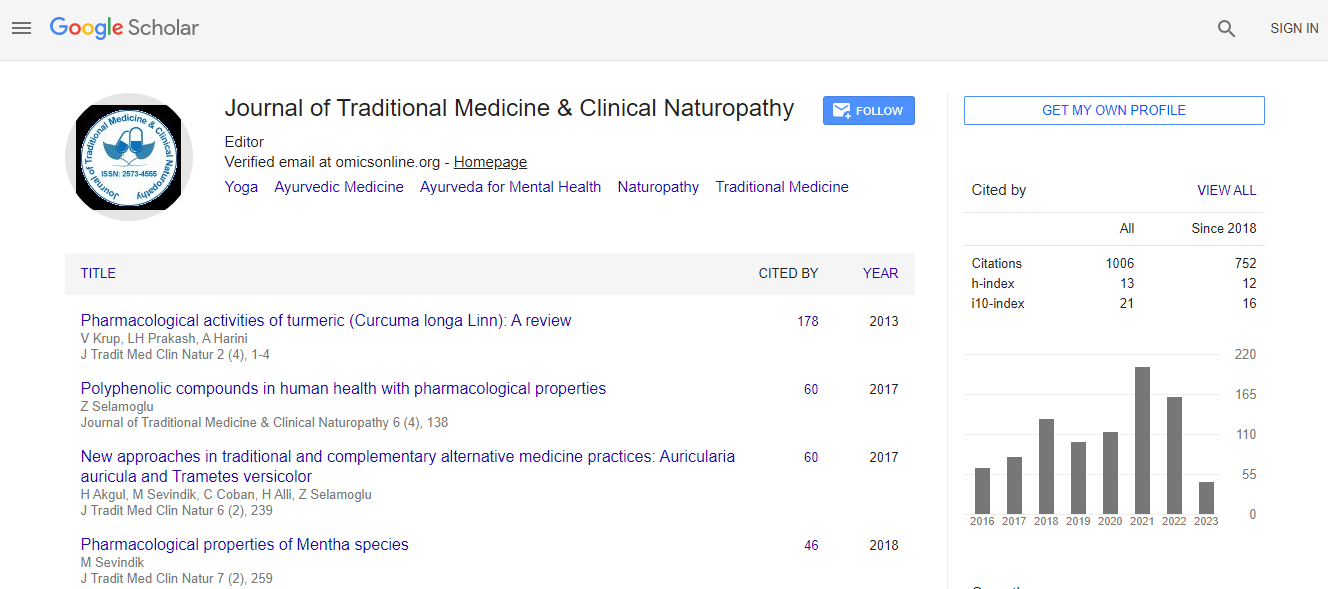Our Group organises 3000+ Global Conferenceseries Events every year across USA, Europe & Asia with support from 1000 more scientific Societies and Publishes 700+ Open Access Journals which contains over 50000 eminent personalities, reputed scientists as editorial board members.
Open Access Journals gaining more Readers and Citations
700 Journals and 15,000,000 Readers Each Journal is getting 25,000+ Readers
Google Scholar citation report
Citations : 1504
Journal of Traditional Medicine & Clinical Naturopathy peer review process verified at publons
Indexed In
- CAS Source Index (CASSI)
- Google Scholar
- Sherpa Romeo
- Open J Gate
- Genamics JournalSeek
- RefSeek
- Directory of Research Journal Indexing (DRJI)
- Hamdard University
- EBSCO A-Z
- Publons
- Geneva Foundation for Medical Education and Research
- Euro Pub
- ICMJE
Useful Links
Recommended Journals
Related Subjects
Share This Page
Ethiopian folk medicine for treatment of rabies: A review
Joint Event on Global Summit on Traditional & Restorative Medicine & 10th World Congress on Neuropharmacology
Hiwot Moges
Addis Ababa University, Ethiopia
Posters & Accepted Abstracts: J Tradit Med Clin Natur
Abstract
Background: Rabies is a serious disease caused by a virus mainly zoonotic which affects warm blooded animals. The dog is the species most responsible for human exposure, with 98% of human case and vaccination due to the bite of rabid or suspected rabid dogs. Objective: The objective of this study was to identify, document, asses the route of administration and preparation methods of medicinal plants used for anti-rabies. Method: Ethnobotanical data review was conducted on published articles for medicinal plants used for treatment of rabies in Ethiopia from Google Scholar, PubMed, theses, dissertations and unpublished thesis reports. Data analysis was conducted using excel. Rabies, anti-rabies, medicinal plants, Ethiopia were used as the search terms. Results: Thirty-seven plant species which belong to 17 families were found to be used in the treatment of rabies in Ethiopia from the data review. Euphorbiaceae, Phytolaccaceae, Fabaceae and Cucurbitaceae were the most commonly used families respectively, whereas Phytolacca dodecandra L. and Ricinus communis L. were the most used plant species. The habit forms of the plant species were shrubs 37.83% and herbs 13.5% while the most commonly used parts of the plant were 56.75% roots and 21.6% leaf. The route of administration and preparation of those medicinal plants include crushed dried root mixed with water and given with tef kita. Conclusion: Phytolacca dodecandra L. and Ricinus communis L. were the most used traditional folk medicine for rabies treatment. Oral preparation is the most common administration of medicinal plants. It is recommended to perform phytochemical screening for most reported plants.Biography
Hiwot Moges is a Pharmacist and Researcher of Traditional and Modern Medicine. Also, she is an MS Fellow of Pharmaco-Epidemiology and Social Pharmacy at Addis Ababa University.
E-mail: hiwotmoges81@yahoo.com

 Spanish
Spanish  Chinese
Chinese  Russian
Russian  German
German  French
French  Japanese
Japanese  Portuguese
Portuguese  Hindi
Hindi 
